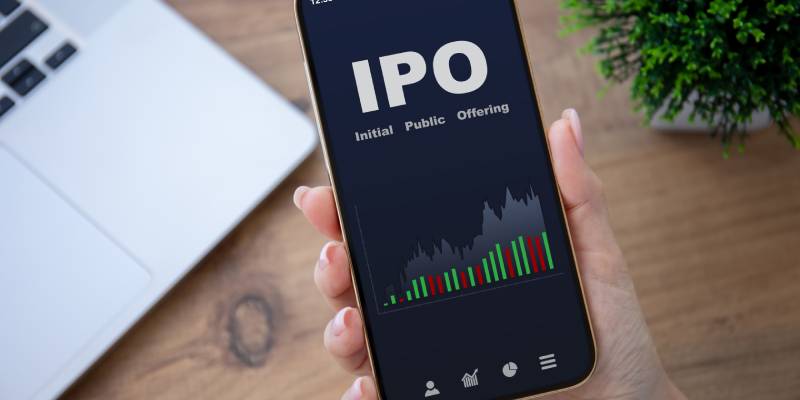As financial scams increase, my insights reveal a need for fresh, tech-based solutions in trade finance. The harm from deceit spreads through this sector, harming specific groups and the system’s honesty. With rising risks and more cunning fraudsters, I see that wisely adding digital tools to risk plans is critical to stopping trade fraud. This approach fights crime and builds lasting trust and strength in the industry.
Grasping Trade Finance Fraud Prevention
I’ve seen that financial deceit in trade finance is on the rise. The ACFE findings are alarming; firms worldwide might lose about 5% of yearly earnings to scams. This substantial cost calls for a strong reaction in a critical area like trade finance.
Scammers use intelligent tricks to abuse the trade finance network. Fake bills and repeated financing are common tactics. Such schemes have led to significant scandals, shaking the sector’s foundation. The damage from these high-profile cases affects not just the direct firms but also banks and others in trade finance deals.
As we tackle the seriousness of trade fraud, digital tools are vital allies. By adding tech solutions to our risk plans, we are starting to fight back. Digital tools are not just hopeful. They are needed for the future of the sector’s honesty and smooth operation.
The Part of Digital Tools in Trade Finance Fraud Prevention
From my viewpoint, making trade finance digital is a giant leap in stopping Fraud and dirty money. Adding digital tools to trade offers a chance to boost safety and deal speed. These tools cut the risks linked to old, paper-based methods that are easy targets for scams.
To see how digital tools help stop trade fraud, consider these points
- Adding digital tools to trade offers a chance to boost safety and deal speed.
- Digital bills of lading are essential in this shift.
- Making documents digital cuts fraud risk by tracking deals more securely and clearly.
These points show the significant role of digital trade documents in making trade finance safer and smoother. The shift to digital is about more than new tech. It is about a plan that backs making trade digital.
The Effect of Digital Documents on Fraud Prevention
Digital trade papers, like digital bills of lading, are vital in changing trade finance. These tools make deals safer and faster. We boost trade finances safety by lowering risks linked to old paper methods.
The move to tech in trade finance is not just about new tools. It is about an environment where these tools work well to stop Fraud. As we see the need for safe, checkable ways to do deals, global rules and consistency in digital papers become key. This leads to a plan that can back up making trade digital, aiming for a safer trade finance future.
URDTT Making Digital Trade Standard to Stop Fraud
Understanding URDTT’s role in digital trade is key. URDTT ( Uniform Rules for Digital Trade Transactions) aims to create a tech-neutral, fully digital space. Its design extends to corporate areas, essential for non-bank finance service firms.
URDTT matches UNCITRAL Model Laws on Digital Commerce, Signatures, and Records. It sets a world standard for digital trade deals. This promotes using digital records and data, which are vital in today’s digital world.
Various tech service firms plan to use URDTT. Many have added URDTT to their platform rules and make trade products based on it. This is a good step towards cutting the risk of Fraud in digital trade finance.
With URDTT setting a world standard, we must see how these rules work against complex Fraud in trade finance.
Looking at Types and Examples of Trade Finance Fraud
Knowing the types of trade finance fraud is vital for tech firms in finance. The ICC Commercial Crime Services investigates many frauds, like credit, charter party, cargo theft, and ship finance fraud.
The ICC has spotted several common frauds in trade finance
- Credit fraud
- Charter party fraud
- Cargo theft
- Ship finance fraud
These cases show the variety of fraud in trade finance and the need for solid fraud-fighting plans. A significant case was the Qingdao warehouse scam. Here, fake warehouse receipts and repeated use of the same goods for loans and other deals caused significant bank losses and lost trust in the industry.
Reflecting on the Qingdao case, we need to stay alert and use new solutions to avoid scams.

Tech Advances for Trade Finance Fraud Detection
Watching the finance industry change, I’ve seen a big move to tech-based fraud detection. Manual methods are old news. We are moving to tech solutions that change trade finances, security and efficiency.
The finance industry is now using tech like
- Machine learning and AI to spot Fraud in massive data sets.
- Real-time checks and analytics to find odd, fraud-like actions.
- Big data and face matching to check identities better.
These tech advances are a big step in trade finance fraud prevention. They offer better safety tools for financial groups. Using the latest tech, these groups can spot and stop Fraud faster and more accurately. It is a significant change that sets new industry standards.
We are boosting our fraud-fighting tools and prepping for future safety tech using these tech advances.
- Using AI and Machine Learning for Fraud Prevention
AI and machine learning are vital in analyzing massive data sets for Fraud. These techs learn and improve over time, spotting new and complex frauds. Their ability to adapt is critical in a sector where scammers always find new cheating methods.
With AI’s role in fraud prevention clear, we see how it works with other tools to build a strong fraud defence. When used together, these techs offer a plan for spotting and stopping fraud and keeping trade finance deals safe and honest.
Real-time Checks and Analytics in Fraud Prevention
From what I’ve seen, real-time checks are vital in spotting and responding to Fraud in trade finance. Behaviour checks can spot odd, fraud-like actions, such as strange deal patterns. These techs are key in quickly finding and stopping Fraud, offering new safety levels in our finance systems. With real-time checks and analytics evolving, we see a changing fraud prevention landscape, with new techs strengthening our defences.
- Big Data and Face Matching Boosting Fraud Prevention
Big data analytics has been vital in finding hidden fraud patterns by mixing different data sources. American Express’s Enhanced Authorization system is a good example, checking deals more closely for Fraud. Also, face-matching banks have strengthened identity checks, adding a vital safety layer against fakes. Despite these tech advances, we must stay alert and refine our fraud-fighting methods.
Read More : Standardization as a Key to Trade Finance Fraud Prevention
Challenges and Future of Trade Finance Fraud Detection
Adding tech to trade finance has helped detect and stop fraud but has also brought challenges. One big issue is false alarms, where legitimate deals are wrongly marked as fraud. This can annoy customers and hurt trust in the system, which we must avoid.
Finding the right mix of safety and ease of use is critical. We must ensure our fraud detection tools are robust without making things too hard for real users. Considering these challenges, we need innovative and reliable tech to keep our finance system honest.
Security vs. Ease of Use in Fraud Detection
In my view, intelligent tech use is the answer. As we add new tech, fraud detection is set for significant improvements to better balance safety and ease of use.
- New Tech Trends in Fraud Detection
Adding deep learning and blockchain to fraud detection tools is a big move. These technologies offer new safety and efficiency levels, which is critical for the finance sector. The chance for financial groups to collaborate and share data and insights is also good news, boosting our joint fraud-fighting ability.
With these tech advances, we are better at spotting and stopping Fraud and making trade finance more streamlined and by the book.
Boosting Compliance and Efficiency in Fraud Prevention
Adding fraud detection tech to trade finance is not just about fighting Fraud. It is also vital for following rules and making operations run smoother. Techs like the Legal Entity Identifier (LEI) and Swift’s KYC Registry are big here.
The LEI system gives a standard ID for legal entities in finance deals, helping verify identities and stop Fraud. It makes due diligence easier and is critical for tracking deals and spotting odd patterns. Swift’s KYC Registry is also valuable for financial groups. It gathers KYC info in a standard way, helping banks do due diligence faster.
By making identity checks automatic and due diligence smoother, these techs cut manual work, lower mistakes, and save time. This lets financial groups use their resources better and focus on other risk areas.
As we see the need to follow the rules and run smoothly in fraud prevention, it is clear that banks, tech firms, and industry groups must work together for a safer and stronger trade finance world.
Working Together for Better Fraud Prevention
From my experience, stopping trade fraud needs teamwork. Banks, tech firms, and industry groups must work together to fight finance crime well. This team approach is not just an idea.
Standard rules are vital in stopping Fraud. The KYC Registry has been extensively instrumental in making finances safer. The push for more use of Legal Entity Identifiers (LEIs) is another sign of the industry’s move to standard rules and clearness. Using these rules, we join forces against financial crime, making it harder for scammers to cheat.
As we see the need for teamwork and standard rules in fraud prevention, we must also consider the tech advances shaping our strategies in this fight.
Strengthening Trade Finance Final Thoughts
Looking at the growing need for better safety in trade finance, I’m sure that techs’ role in fighting Fraud is clear. With new threats testing the industry, adding top digital tools is our best defence. Our talk is not done as we build on tech progress and look for better risk plans.
Trade finance advice provides regular updates on articles related to trade finance organizations. For more articles, please visit our website.



